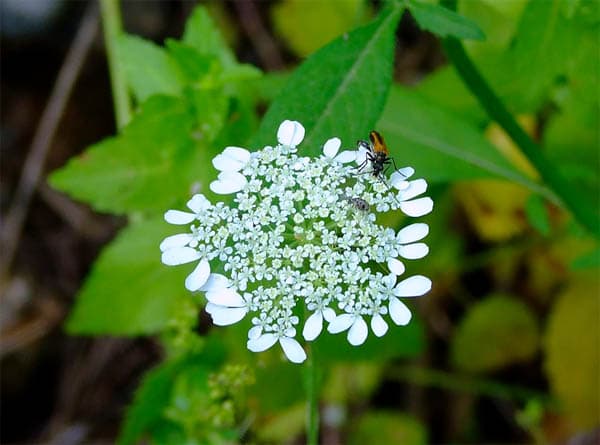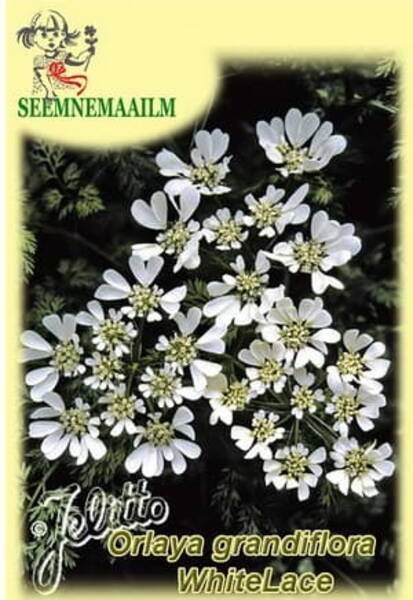Family: Apiaceae.
Origin: Europe, from Africa to Central Asia (meadows, fields).
Suitable for natural landscape design. Attractive to butterflies and other pollinators. Long flowering. Easy to grow.
Natural flowering period: June - September.
Winter hardiness zones: Z5 – Z9.
Foliage: pubescent, broadly elliptical, narrow, vigorous green.
Growth pattern: graceful
Flowering plant height: 60 cm.
Distance between plants: 30 cm.
1,0 g = 65 seeds.
Those plants that are sometimes passed off as new often turn out to be old and good, but undeservedly forgotten acquaintances. This also happened with Orlaia, which is included in all guides to field and wild plants, but strangely disappeared from reference books on flower crops.
It grows wild in the light olive groves of Tuscany, as well as on the dry soils of warm hillsides throughout southern and central Europe, easily spreading by self-sowing. However, its seeds are very rarely sold on sale, and for this reason it is almost impossible to sow it yourself. However, this situation has begun to change, and it appears that Orlaia has a promising future ahead of it.
The total height of the plant is about 60-80 cm. It has feathery leaves and white or light pink flowers, collected in umbrella inflorescences. The spectacular caps look almost the same as those of the large ammi, differing only in the larger outer flowers, which resemble hanging hearts in shape.
Orlaia is an excellent “filler” for flower beds, and its flowering shoots are great in bouquets. In temperate climates, seeds also spread by self-sowing and germinate in the fall. According to Dutch experts, sowing should really be done in the fall. Young plants that form a basal rosette of leaves, even in Northern Europe, for example in the Netherlands, winter well. In the spring they quickly send out tall shoots and begin to bloom in June. The flowering period lasts two months, however, even after its end the bushes retain their decorative appearance, since the umbrellas with bristly seeds are very beautiful.
Orlaia develops best on dry sandy or loose clay soil. If there is too much organic or complex fertilizer in the ground, then the plants are often affected by carrot flies. In this regard, the landing site must be chosen with special care. However, if you can find the optimal conditions, Orlaya will delight your eyes for many years.

White Lace Flower. Bot.syn.: Caucalis grandiflora, Daucus grandiflora.












